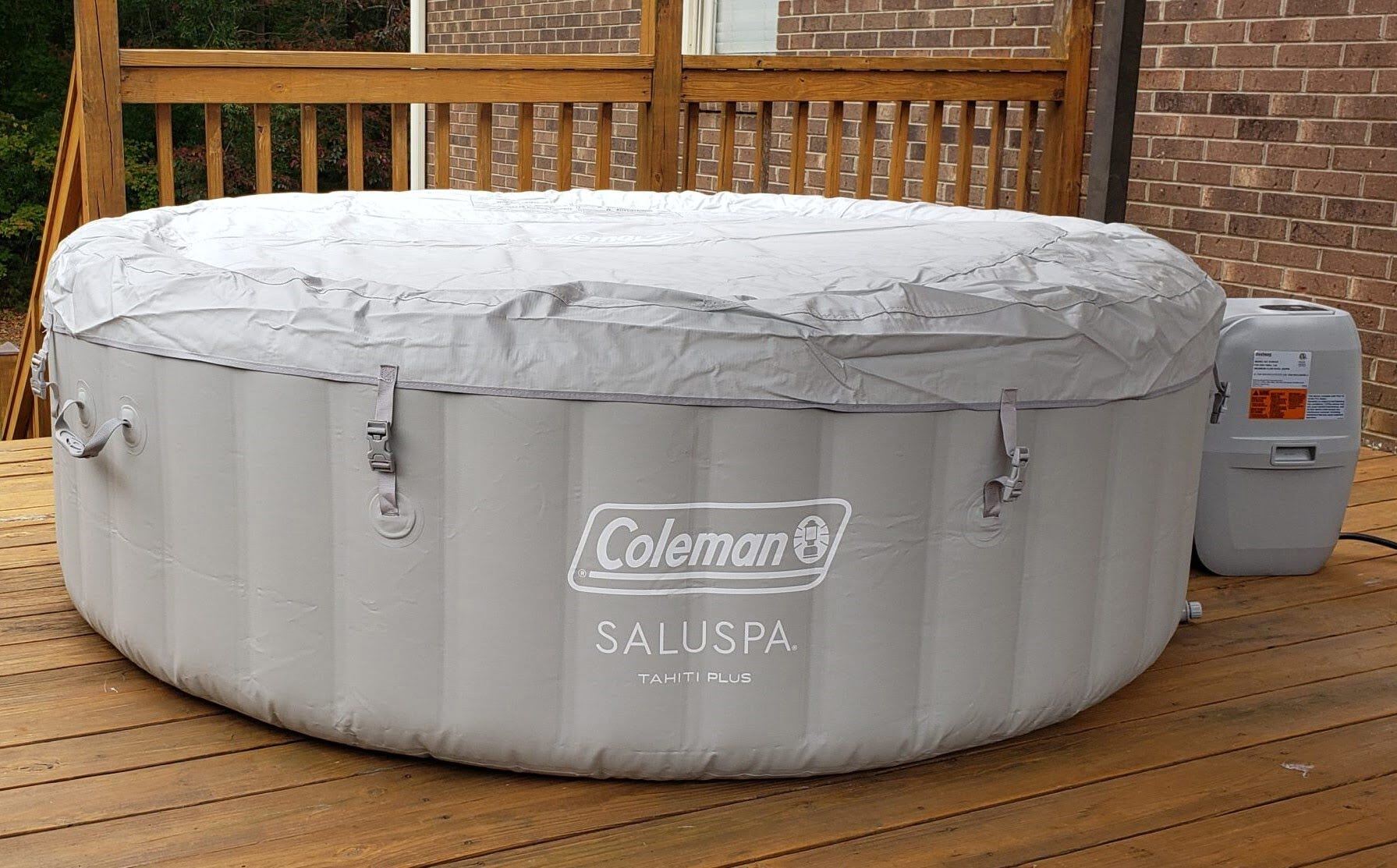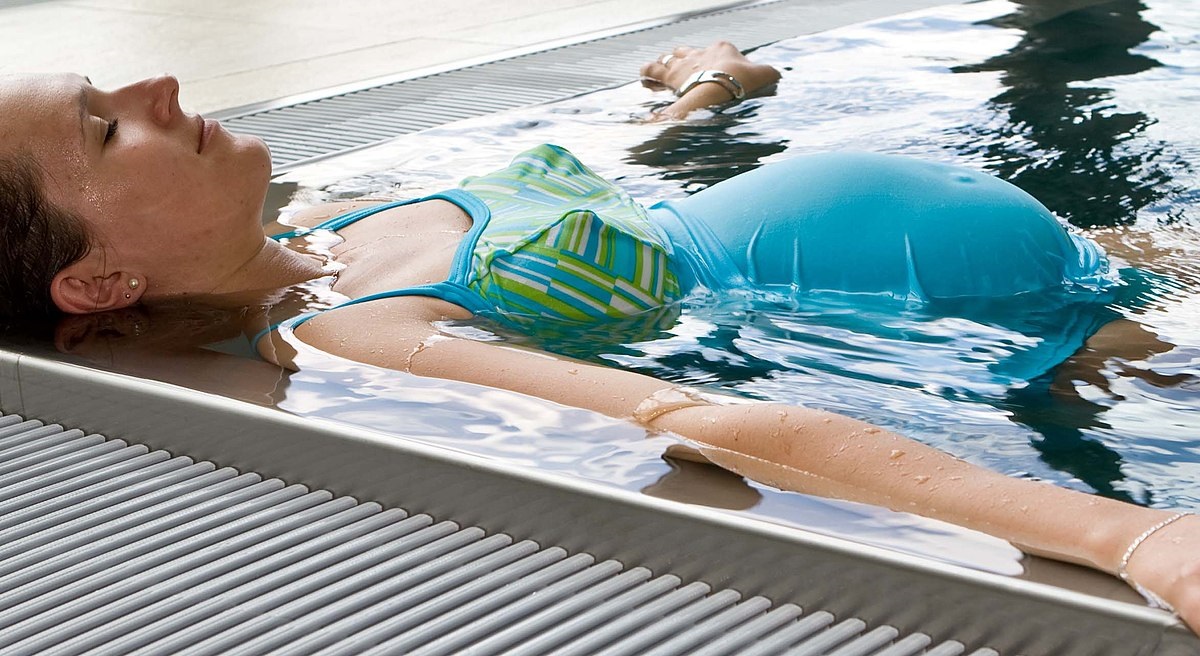Home>Gardening & Outdoor>Pool & Spa Care>What Kind Of Infections Can You Get From A Hot Tub


Pool & Spa Care
What Kind Of Infections Can You Get From A Hot Tub
Published: December 30, 2023
Learn about the potential infections from a hot tub and how to prevent them with proper pool and spa care. Stay healthy and enjoy your relaxation time.
(Many of the links in this article redirect to a specific reviewed product. Your purchase of these products through affiliate links helps to generate commission for Storables.com, at no extra cost. Learn more)
Introduction
Welcome to the world of luxurious relaxation and hydrotherapy! Hot tubs and pools are fantastic for unwinding, easing muscle tension, and socializing. However, it’s crucial to be aware of the potential health risks associated with these aquatic havens. While proper maintenance and hygiene practices can significantly minimize the risk of infections, it’s essential to understand the types of infections that can occur and how to prevent them.
In this comprehensive guide, we’ll explore the various types of infections that individuals can potentially contract from hot tubs and pools. From bacterial and fungal infections to viral and parasitic threats, we’ll delve into the specifics of each, shedding light on the symptoms, causes, and preventive measures. By gaining a deeper understanding of these potential health concerns, you can make informed decisions to safeguard your well-being while enjoying the countless benefits of aquatic leisure.
Key Takeaways:
- Enjoy hot tubs and pools, but beware of infections! Bacteria, fungi, viruses, and parasites can lurk in these aquatic havens. Maintain cleanliness, hygiene, and prompt treatment for a safe and rejuvenating experience.
- Prevent infections by maintaining proper water chemistry, thorough cleaning, and personal hygiene. Seek medical evaluation and follow prescribed treatments if symptoms of infection arise after hot tub exposure.
Read more: What Age Can A Baby Get In A Hot Tub
Bacterial Infections
Bacterial infections are among the most common concerns associated with hot tubs and pools. The warm, moist environment of these water facilities provides an ideal breeding ground for various bacteria, potentially leading to infections. One of the most well-known bacteria responsible for hot tub-related infections is Pseudomonas aeruginosa. This bacterium can cause “hot tub rash,” characterized by itchy, red bumps and pus-filled blisters, typically appearing within a few days of hot tub exposure. Additionally, Pseudomonas aeruginosa can lead to “hot tub folliculitis,” resulting in inflamed hair follicles and discomfort.
Another concerning bacterium is Legionella, which can cause Legionnaires’ disease, a severe form of pneumonia. When hot tubs are not adequately maintained and sanitized, they can become contaminated with Legionella, posing a risk to individuals who inhale the bacteria through water vapor or mist. Symptoms of Legionnaires’ disease include cough, shortness of breath, muscle aches, fever, and headaches.
Furthermore, Escherichia coli (E. coli) is a bacterium that can contaminate hot tubs and pools, potentially leading to gastrointestinal illnesses. Exposure to E. coli-contaminated water can result in symptoms such as stomach cramps, diarrhea, nausea, and vomiting.
To mitigate the risk of bacterial infections, it’s crucial to maintain proper water chemistry and sanitation in hot tubs and pools. Regular testing and adjustment of pH and chlorine levels are essential for preventing bacterial proliferation. Additionally, adhering to a strict cleaning regimen for hot tub surfaces, filters, and plumbing can significantly reduce the likelihood of bacterial contamination. By prioritizing hygiene and maintenance, individuals can indulge in the therapeutic joys of hot tubs and pools while minimizing the risk of bacterial infections.
Fungal Infections
While hot tubs and pools offer a serene escape, they can also harbor fungal pathogens that pose potential health risks. Fungal infections, though less common than bacterial concerns, can still manifest in individuals who frequent these aquatic environments. One of the most prevalent fungal infections associated with hot tubs is tinea corporis, commonly known as “ringworm.” Contrary to its name, ringworm is not caused by a worm but by various fungi, such as Trichophyton and Microsporum, which can thrive in warm, moist conditions. In hot tubs, these fungi can come into contact with the skin, leading to circular, red, itchy rashes that resemble rings, hence the name “ringworm.”
Another fungal infection that individuals may encounter is dermatophytosis, often referred to as “athlete’s foot.” This condition is caused by fungi such as Trichophyton and Epidermophyton, which can contaminate hot tub and pool areas. When individuals walk barefoot in these environments, they may come into contact with the fungi, leading to itchy, cracked, and peeling skin between the toes and on the soles of the feet.
Preventing fungal infections in hot tubs and pools involves meticulous maintenance and personal hygiene practices. Regular cleaning and disinfection of hot tub surfaces, as well as the consistent maintenance of appropriate water chemistry, can help curb fungal growth. Additionally, individuals can reduce their risk of fungal infections by wearing water-resistant footwear in and around hot tub and pool areas, minimizing direct contact between their skin and potentially contaminated surfaces.
By understanding the nature of fungal infections and implementing proactive measures to maintain cleanliness and personal hygiene, individuals can relish the rejuvenating benefits of hot tubs and pools while safeguarding themselves against the discomfort and inconvenience of fungal-related ailments.
Viral Infections
While hot tubs and pools are synonymous with relaxation and enjoyment, they can also harbor viral pathogens that pose potential health risks. Viral infections, though less common than bacterial and fungal concerns, can still manifest in individuals who frequent these aquatic environments. One of the most notable viral infections associated with hot tubs is herpes simplex virus (HSV). HSV is highly contagious and can be transmitted through direct skin-to-skin contact or contact with contaminated surfaces in hot tubs. Individuals with HSV may experience painful blisters or cold sores on the mouth, lips, or genital area after exposure to the virus in hot tubs.
Another concerning viral infection is human papillomavirus (HPV), which can be transmitted in hot tubs and pools. HPV is known to cause genital warts, which can appear on the skin and mucous membranes of the genital area. In hot tub environments, individuals may come into contact with the virus, potentially leading to the development of genital warts.
Preventing viral infections in hot tubs and pools requires a multifaceted approach. Maintaining proper water chemistry and sanitation is crucial for minimizing the risk of viral pathogen transmission. Regular testing and adjustment of chlorine and pH levels can help mitigate the potential spread of viruses in aquatic environments. Additionally, individuals should be mindful of personal hygiene practices, such as refraining from sharing towels and avoiding direct skin contact with potentially contaminated surfaces.
By understanding the nature of viral infections and implementing proactive measures to maintain cleanliness and personal hygiene, individuals can savor the therapeutic benefits of hot tubs and pools while minimizing the risk of viral-related health concerns.
Parasitic Infections
Parasitic infections are a lesser-known yet significant concern associated with hot tubs and pools. These microscopic organisms, including protozoa and helminths, can thrive in aquatic environments and pose potential health risks to individuals. One of the most concerning parasitic infections linked to hot tubs is Cryptosporidium, a protozoan parasite that can cause gastrointestinal illness. Cryptosporidium can contaminate hot tub water through fecal matter, and individuals who inadvertently swallow or inhale the parasite may experience symptoms such as diarrhea, stomach cramps, nausea, and fever.
Another parasitic threat is Giardia lamblia, a microscopic parasite that can also lead to gastrointestinal issues. When hot tub water becomes contaminated with Giardia, individuals may experience diarrhea, gas, dehydration, and stomach cramps after inadvertently ingesting the parasite.
Preventing parasitic infections in hot tubs and pools demands rigorous maintenance and sanitation practices. Regular water testing and treatment to eliminate and prevent the proliferation of parasites are essential for safeguarding individuals against potential health risks. Additionally, maintaining proper filtration and circulation systems can aid in minimizing the presence of parasitic organisms in hot tub water.
Furthermore, personal hygiene practices, such as showering before and after hot tub use and refraining from swallowing hot tub water, can further reduce the risk of parasitic infections. By understanding the nature of parasitic threats and adhering to meticulous maintenance and hygiene protocols, individuals can revel in the tranquil pleasures of hot tubs and pools while minimizing the risk of parasitic-related health concerns.
Always shower before and after using a hot tub to reduce the risk of infections. Keep the water properly treated and maintain the hot tub’s cleanliness to prevent bacteria and other pathogens from thriving.
Read more: What Is The Biggest Hot Tub You Can Buy
Prevention and Treatment
Preventing infections associated with hot tubs and pools necessitates a proactive approach that encompasses meticulous maintenance, proper sanitation, and personal hygiene practices. By implementing preventive measures, individuals can mitigate the risk of contracting bacterial, fungal, viral, and parasitic infections, ensuring a safe and enjoyable aquatic experience.
Preventive Measures:
- Maintain Proper Water Chemistry: Regularly test and adjust the pH and chlorine levels in hot tubs and pools to inhibit the proliferation of pathogens.
- Thorough Cleaning and Disinfection: Adhere to a strict cleaning regimen for hot tub surfaces, filters, and plumbing to prevent the buildup of bacteria, fungi, and parasites.
- Water Filtration and Circulation: Ensure that hot tubs and pools are equipped with effective filtration and circulation systems to minimize the presence of contaminants.
- Personal Hygiene: Encourage individuals to shower before and after hot tub use to reduce the introduction of contaminants and pathogens into the water.
- Footwear Usage: Advocate for the use of water-resistant footwear in and around hot tub and pool areas to minimize direct skin contact with potentially contaminated surfaces.
Treatment and Remedies:
If individuals suspect that they have contracted an infection from a hot tub or pool, prompt action is crucial for addressing the issue effectively. The following steps can aid in the treatment and management of hot tub-related infections:
- Seek Medical Evaluation: If symptoms of infection, such as rashes, gastrointestinal distress, or respiratory issues, manifest after hot tub exposure, it’s essential to consult a healthcare professional for an accurate diagnosis and appropriate treatment.
- Medication and Topical Treatments: Depending on the type of infection contracted, healthcare providers may prescribe oral medications, topical ointments, or antifungal creams to alleviate symptoms and eradicate the causative pathogens.
- Hydration and Rest: For individuals experiencing gastrointestinal symptoms due to parasitic or bacterial infections, adequate hydration and rest are vital for supporting the body’s recovery process.
- Environmental Remediation: Thoroughly clean and disinfect hot tubs and pools to eliminate any potential sources of contamination, preventing the recurrence of infections and safeguarding the health of future users.
By integrating these preventive measures and treatment strategies, individuals can enjoy the rejuvenating benefits of hot tubs and pools while minimizing the risk of infections and promptly addressing any health concerns that may arise.
Conclusion
As we immerse ourselves in the serene oasis of hot tubs and pools, it’s imperative to remain vigilant about the potential health risks associated with these aquatic environments. Bacterial, fungal, viral, and parasitic infections can pose significant threats to individuals who indulge in the therapeutic pleasures of hot tubs and pools. However, by understanding the nature of these infections and implementing proactive preventive measures, we can revel in the revitalizing benefits of hydrotherapy while safeguarding our well-being.
From the diligent maintenance of proper water chemistry and sanitation to the promotion of personal hygiene practices, there are various strategies that can significantly reduce the risk of infections linked to hot tubs and pools. By prioritizing these measures, we can create a safer and more enjoyable aquatic experience for ourselves and others.
Furthermore, prompt recognition and treatment of hot tub-related infections are paramount in addressing any health concerns that may arise. Seeking medical evaluation and adhering to prescribed treatment regimens can aid in effectively managing infections, facilitating a speedy recovery, and preventing the spread of pathogens to others.
Ultimately, by fostering a collective commitment to maintaining cleanliness, hygiene, and awareness, we can cultivate an environment where the tranquil benefits of hot tubs and pools can be savored without compromising our health. Let’s embrace the restorative joys of aquatic leisure while upholding a steadfast dedication to safeguarding our well-being.
So, as you bask in the soothing embrace of a hot tub or pool, remember to cherish the rejuvenating experience while remaining mindful of the essential practices that uphold a healthy and harmonious aquatic haven.
Frequently Asked Questions about What Kind Of Infections Can You Get From A Hot Tub
Was this page helpful?
At Storables.com, we guarantee accurate and reliable information. Our content, validated by Expert Board Contributors, is crafted following stringent Editorial Policies. We're committed to providing you with well-researched, expert-backed insights for all your informational needs.















0 thoughts on “What Kind Of Infections Can You Get From A Hot Tub”